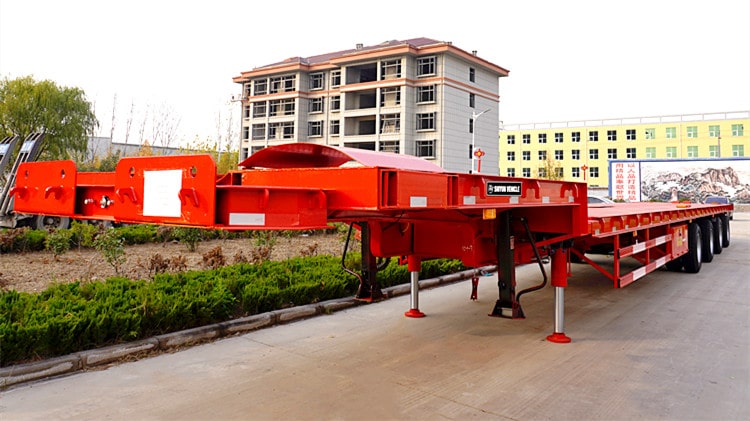 4 Axle 56 Meters Extendable Blade Trailer for Sale in Ho Chi Minhb Vietnam
4 Axle 56 Meters Extendable Blade Trailer for Sale in Ho Chi Minhb Vietnam
For this time, the customer who bought the 4 axle 56 meters extendable blade trailer from Shiyun Vehicle is from Ho Chi Minh Vietnam. Shiyun extendable trailers for wind turbine blades transport are very best-selling in both Vietnam and South East Asia. The customer saw some extendable blade trailers in his local area, and he contacted us through email. Our sales sent some different types of photos and more details to him, he was satisfied with our trailers. The quotation is also made according to his needs. Finally the customer bought this 4 axle 56 meters extendable blade trailer. And the customer said that he will give us a feedback when he receives it.
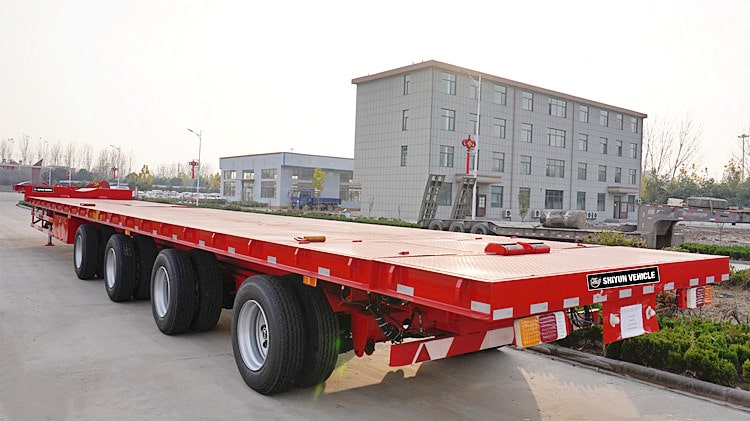 4 Axle Extendable Blade Trailer
4 Axle Extendable Blade Trailer
The trailer’s main structure has FOUR distinct features constructed of a high strength design and material to enhance its function and operations.
This broadens the scope of use for this kind of trailer especially for handling different types of loads and for transportation on different terrain. They include the Gooseneck, the Steering Structure, the extendable beam and the tail platform.
Gooseneck
The point of connection between the trailer and the truck is a Gooseneck design. Commonly, the gooseneck can lift up and
down to meet the different height of the 5th wheel of a truck.
When the truck steers, gooseneck can pass the signal, and the trailer starts to steer.
Steering structure
Steering is a very important aspect of this kind of trailer. Therefore, there is a steering structure designed to meet efficient steering capabilities during transportation.
Because the trailer’s length can be up to 62m, commonly rear axles need steering function to help trailer get through a curved road. There are three steering structure configurations to help this trailer navigate well on the road. These include:
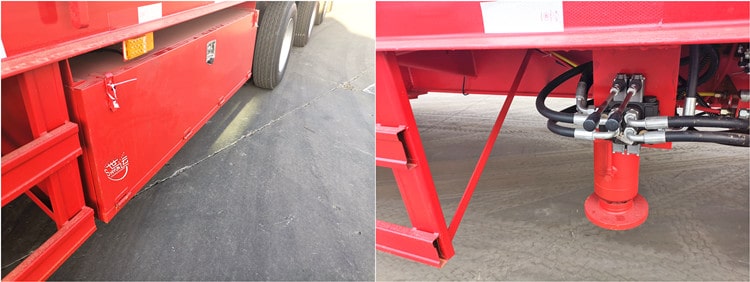
Hydraulic Bogies
This hydraulically controlled design is meant to achieve a ±55° Steering Angle. The structure is of a more tough design and construction aimed at making it efficient in steering.
However, due to the hydraulic attachments and other elements of the system, it is expensive. In some occasions as need would arise, the hydraulic bogies can also be controlled remotely by using a controller.
Turntable steering
The turntable steering design is meant to attain a ±45° steering angle. The trailer can steer by a steering turntable through axles installed on turntables.
This design ensures high reliability. However, it is relatively costlier compared to other designs. Below is a diagrammatic representation of the turntable steering.
Self steering Axles
This is a steering structure design with an axle steering of ±45° angle. It is a simple steering structure that is easy to use and maintain.
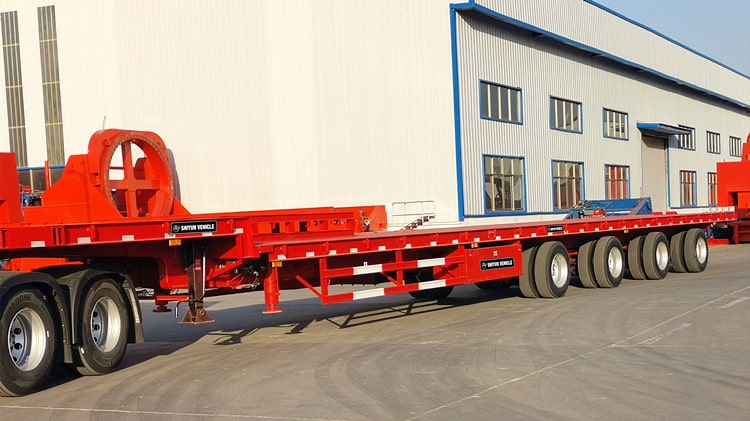 Extendable Trailer for Wind Turbine Blade Transport
Extendable Trailer for Wind Turbine Blade Transport
Extendable beam
The extendable trailer comes with capabilities of adjusting it to its desired length for taking different lengths of loads as desired in a given application. That way, room can be created to take up bigger loads. The extendable part is therefore made tougher for the reason of preventing sagging due to too its length. That way, safety is enhanced during transportation from one point to another.
The extendable beam also serves other functions in supporting the functionality and operations of the entire trailer. Ideally, this is where hydraulic oil tubes and electric wires are also installed. They are needed for passing signals from the gooseneck to their receptors. Most importantly, the extendable beam can have 2- 4 levels of extension. The trailer can, therefore, be made shorter or longer using these extensions depending on the size and nature of the load that needs to be transported.
Tail platform: In order to make the trailer carry longer cargo, there is always a tail platform provided in the extendable blade trailer. This ensures that the load is perfectly held together during loading, transportation and offloading. To suit different applications and use, there usually are two structure types of the tail platform.
Folding platform: In this arrangement, the tail platform is designed to fold back on the extendable beam when not in use. To take up a bigger load, it is usually unfolded from its resting position when not in use.
Pulling platform: A pulling tail platform design is designed to pull out when needed for use and be pushed back when not in transportation.
Material: Trailer construction materials are chosen based on the amount of load it is expected to carry and the force acting on the bed during loading, transportation and offloading.

1. The general extendable blade trailer transporter of wind turbine blades is a bit similar to the lowbed transporter, but its girder adopts a buckle box type design, and the girder is pulled to adjust the length of the vehicle to adapt to the transportation of wind blades of different lengths.
2. The extendable flatbed semi trailer has flat, concave beam, tire leaking and pull-out structures. The frame is stepped and the longitudinal beam section is I-shaped, which has the characteristics of high rigidity and high strength.
3. The vehicle body is made of high-quality steel, and the main plane of the frame and cargo platform is low, which ensures the stability of transportation and is suitable for carrying various construction machinery, large equipment and steel. It adopts three-axis balance type, two-axis balance type or rigid suspension, with a mass balance block installed between the front and rear leaf springs, which can make the front and rear leaf springs change in equal amounts and balance the forces on the front and rear axles.
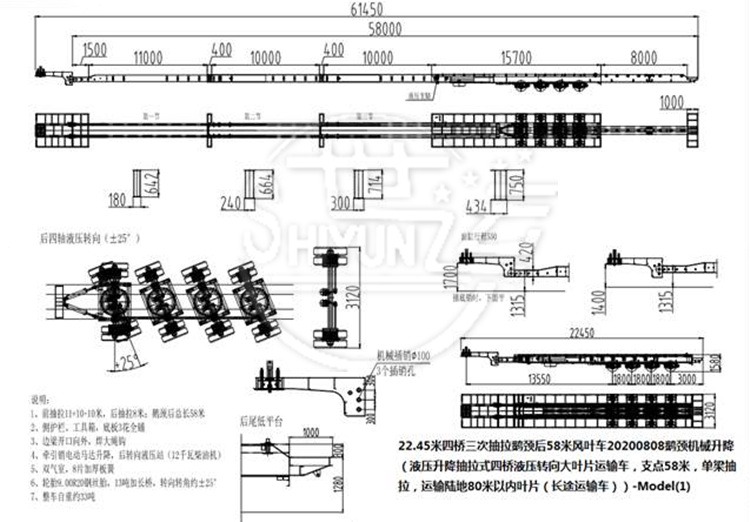 4 Axle Extendable Blade Trailer Drawing
4 Axle Extendable Blade Trailer Drawing